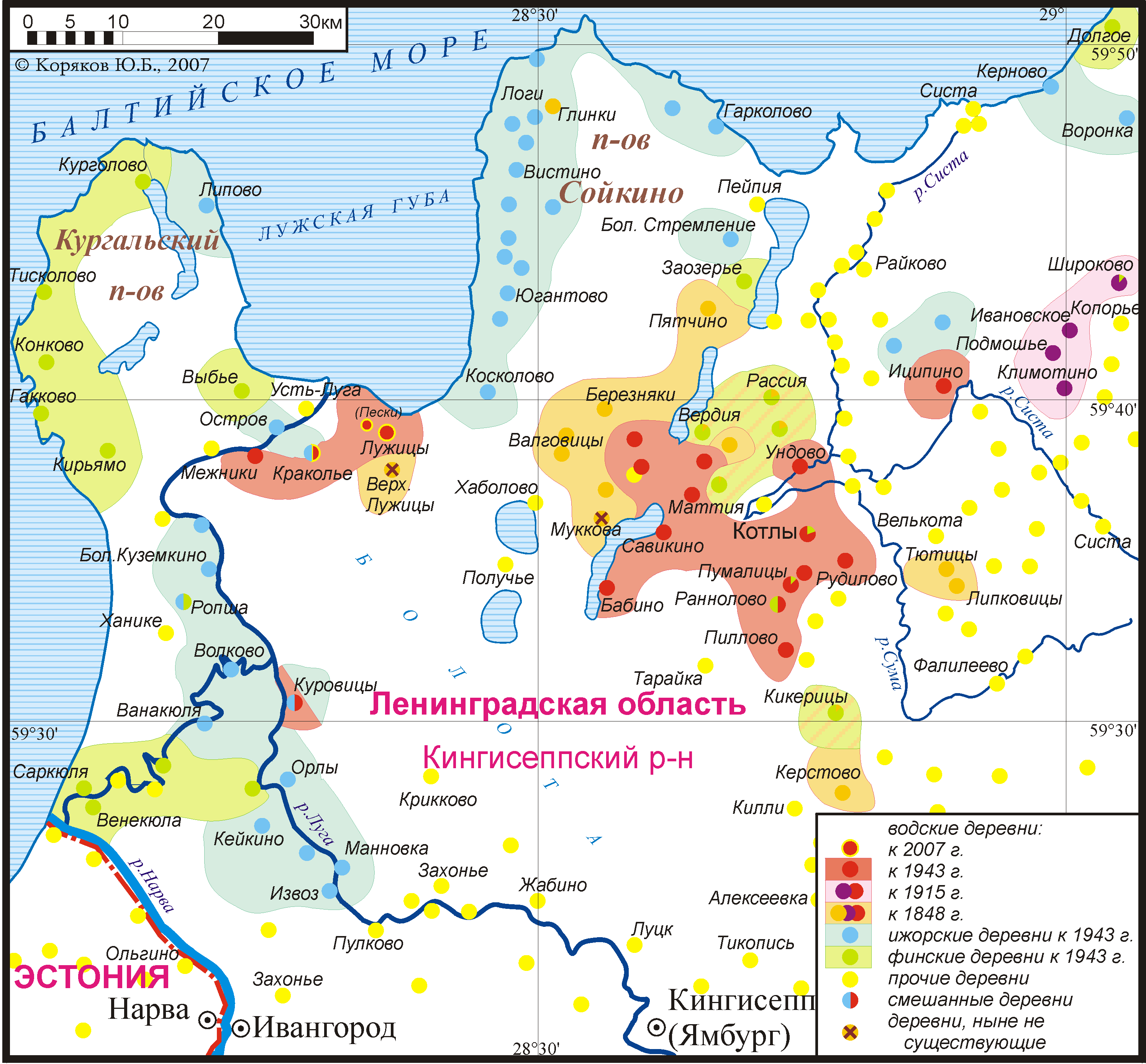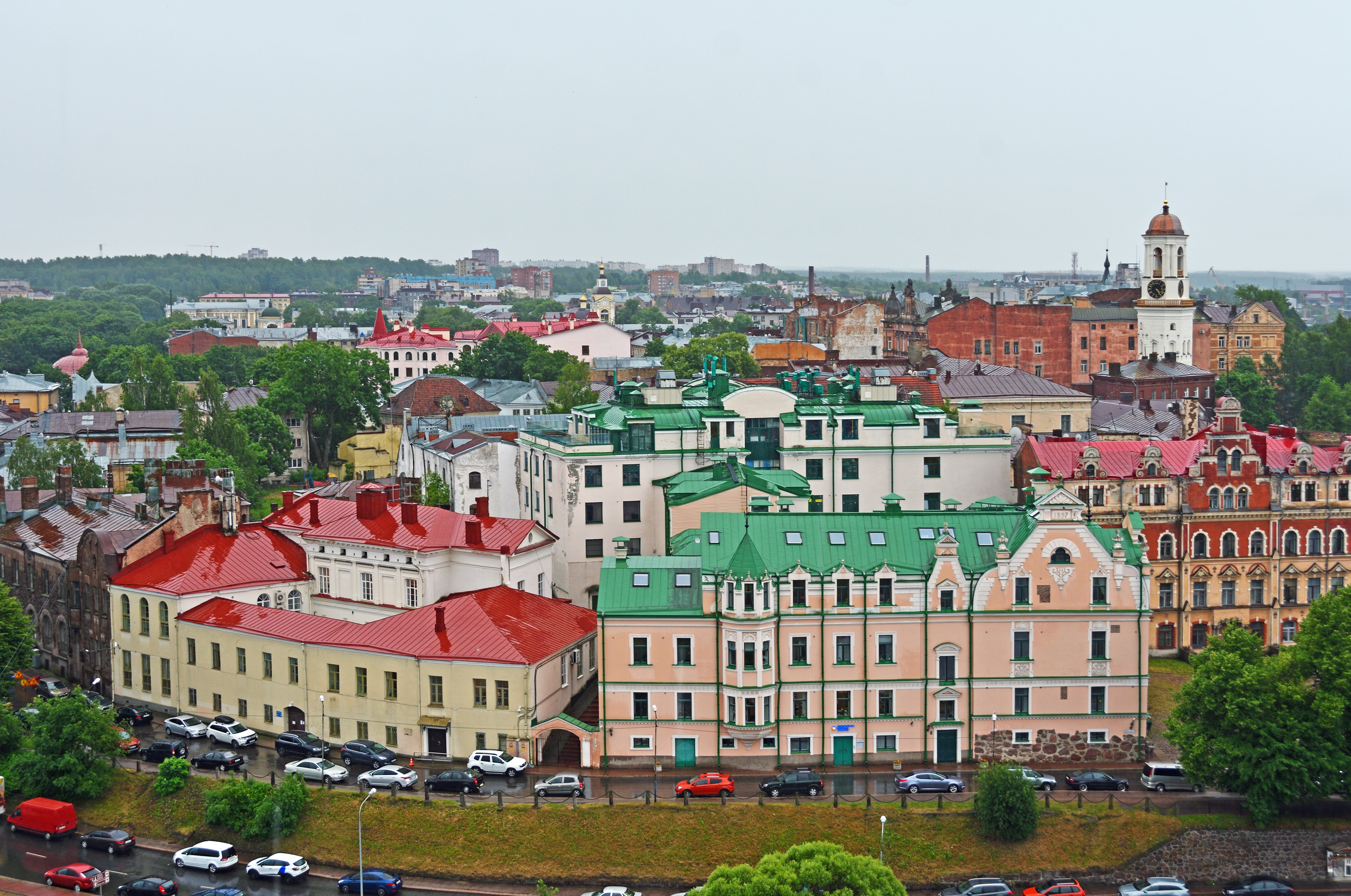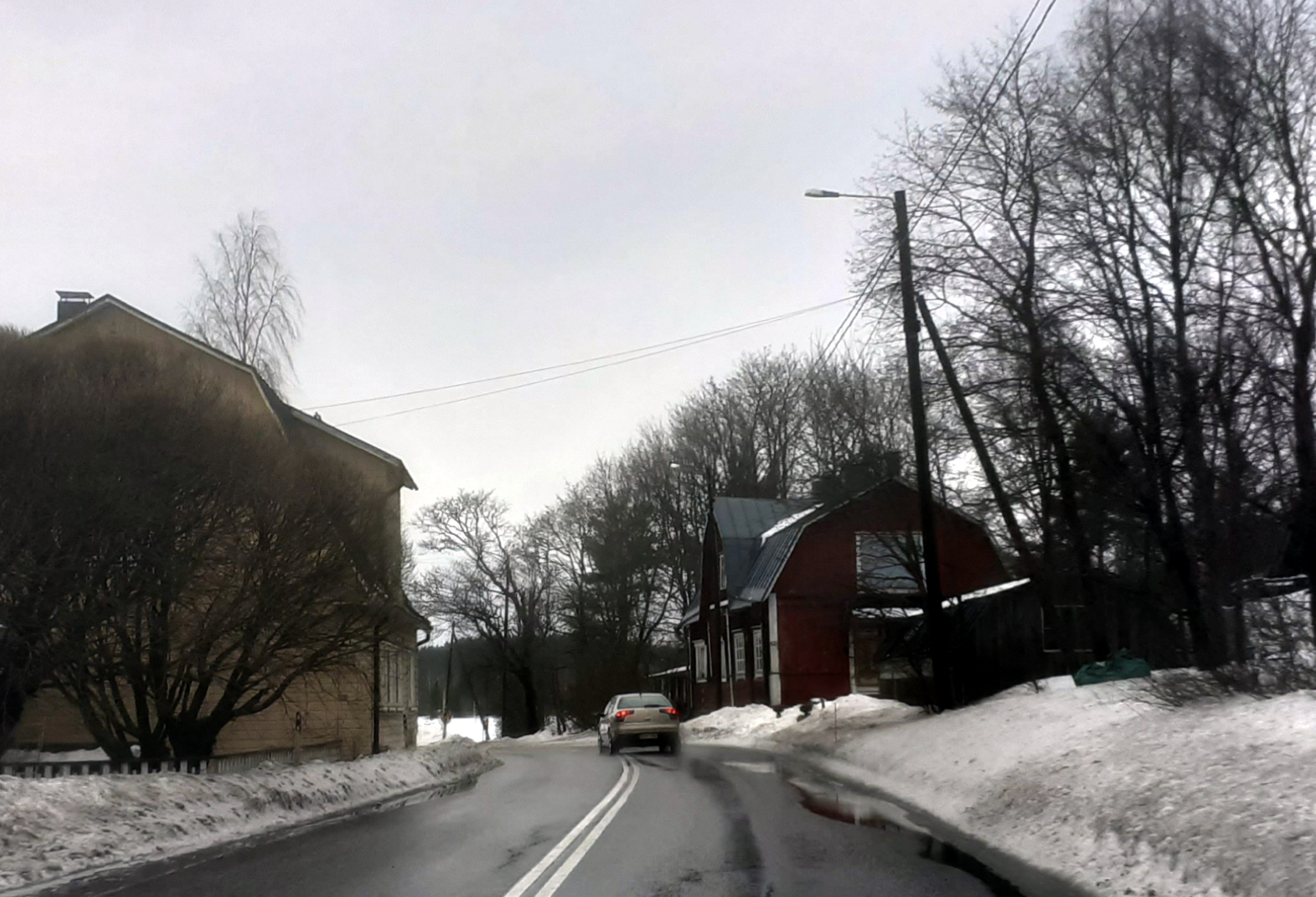|
Jõgõperä
Krakolye (russian: Кракóлье; vot, Jõgõperä; fi, Joenperä; izh, Joemperä) was a rural locality (a village) in Ust-Luzhsky Selsoviet of Kingiseppsky District in Leningrad Oblast, Russia, located just south of Ust-Luga and about southwest of the Ust-Luga Harbour. It is now a part of the settlement of Ust-Luga. Population: 110 (2007 est.)."Административно-территориальное деление Ленинградской области". — СПб., 2007, с. 97. History Krakolye was first mentioned in the Joan Blaeu's Livonian Atlas in 1654 as . It was one of the two villages where the Votic language was still spoken; the other was Luzhitsy in the Leningrad Oblast. The village was merged into Ust-Luga effective October 24, 2008. Notable people Votic teacher and linguist Dmitri Tsvetkov 200px, Dmitri Tsvetkov Dmitri Tsvetkov (''Дмитрий Цветков'') (30 August 1890 in Krakolye – 1930) was a Votic teacher a ... [...More Info...] [...Related Items...] OR: [Wikipedia] [Google] [Baidu] |
Votic Language
Votic, or Votian (''vaďďa tšeeli'', ''maatšeeli'') �vɑːdʔda ˈtʃɨlɨ, mɑːt.ʃɨlɨ is the language spoken by the Votes of Ingria, belonging to the Finnic branch of the Uralic languages. Votic is spoken only in Krakolye and Luzhitsy, two villages in Kingiseppsky District in Leningrad Oblast, Russia, and is close to extinction. According to Arvo Survo, in 2021 Votic had only 4 native speakers and 100 people who had some knowledge of the language. History Votic is one of numerous Finnic varieties known from Ingria. Votic shares some similarities with and has acquired loanwords from the adjacent Ingrian language, but also has deep-reaching similarities with Estonian to the west, which is considered its closest relative. Some linguists, including Tiit-Rein Viitso and Paul Alvre, have claimed that Votic evolved specifically from northeastern dialects of ancient Estonian. Votic regardless exhibits several features that indicate its distinction from Estonian (both innovatio ... [...More Info...] [...Related Items...] OR: [Wikipedia] [Google] [Baidu] |
Leningrad Oblast
Leningrad Oblast ( rus, Ленинградская область, Leningradskaya oblast’, lʲɪnʲɪnˈgratskəjə ˈobləsʲtʲ, , ) is a federal subject of Russia (an oblast). It was established on 1 August 1927, although it was not until 1946 that the oblast's borders had been mostly settled in their present position. The oblast was named after the city of Leningrad. In 1991, the city restored its original name, Saint Petersburg, but the oblast retains the name of Leningrad. The capital and largest city is Gatchina. The oblast overlaps the historic region of Ingria and is bordered by Finland ( Kymenlaakso and South Karelia) in the northwest and Estonia (Ida-Viru County) in the west, as well as five federal subjects of Russia: the Republic of Karelia in the northeast, Vologda Oblast in the east, Novgorod Oblast in the south, Pskov Oblast in the southwest, and the federal city of Saint Petersburg in the west. The first governor of Leningrad Oblast was Vadim Gustov (in ... [...More Info...] [...Related Items...] OR: [Wikipedia] [Google] [Baidu] |
Kingiseppsky District
Kingiseppsky District (russian: Кингисе́ппский райо́н, fi, Kingiseppin piiri) is an administrativeOblast Law #32-oz and municipalLaw #81-oz district (raion), one of the seventeen in Leningrad Oblast, Russia. It is located in the southwest of the oblast and borders with Ida-Viru County of Estonia in the west, Lomonosovsky District in the northeast, Volosovsky District in the east, and with Slantsevsky District in the south. In the north and northwest it is washed by the waters of the Gulf of Finland. The area of the district is .Official website of Kingiseppsky District Its is the |
Village
A village is a clustered human settlement or community, larger than a hamlet but smaller than a town (although the word is often used to describe both hamlets and smaller towns), with a population typically ranging from a few hundred to a few thousand. Though villages are often located in rural areas, the term urban village is also applied to certain urban neighborhoods. Villages are normally permanent, with fixed dwellings; however, transient villages can occur. Further, the dwellings of a village are fairly close to one another, not scattered broadly over the landscape, as a dispersed settlement. In the past, villages were a usual form of community for societies that practice subsistence agriculture, and also for some non-agricultural societies. In Great Britain, a hamlet earned the right to be called a village when it built a church. [...More Info...] [...Related Items...] OR: [Wikipedia] [Google] [Baidu] |
Types Of Inhabited Localities In Russia
The classification system of human settlement, inhabited localities in Russia and some other post-Soviet Union, Soviet states has certain peculiarities compared with those in other countries. Classes During the Soviet Union, Soviet time, each of the republics of the Soviet Union, including the Russian Soviet Federative Socialist Republic, Russian SFSR, had its own legislative documents dealing with classification of inhabited localities. After the history of the Soviet Union (1985-1991), dissolution of the Soviet Union, the task of developing and maintaining such classification in Russia was delegated to the federal subjects of Russia, federal subjects.Articles 71 and 72 of the Constitution of Russia do not name issues of the administrative and territorial structure among the tasks handled on the federal level or jointly with the governments of the federal subjects. As such, all federal subjects pass :Subtemplates of Template RussiaAdmMunRef, their own laws establishing the s ... [...More Info...] [...Related Items...] OR: [Wikipedia] [Google] [Baidu] |
Village
A village is a clustered human settlement or community, larger than a hamlet but smaller than a town (although the word is often used to describe both hamlets and smaller towns), with a population typically ranging from a few hundred to a few thousand. Though villages are often located in rural areas, the term urban village is also applied to certain urban neighborhoods. Villages are normally permanent, with fixed dwellings; however, transient villages can occur. Further, the dwellings of a village are fairly close to one another, not scattered broadly over the landscape, as a dispersed settlement. In the past, villages were a usual form of community for societies that practice subsistence agriculture, and also for some non-agricultural societies. In Great Britain, a hamlet earned the right to be called a village when it built a church. [...More Info...] [...Related Items...] OR: [Wikipedia] [Google] [Baidu] |
Russia
Russia (, , ), or the Russian Federation, is a transcontinental country spanning Eastern Europe and Northern Asia. It is the largest country in the world, with its internationally recognised territory covering , and encompassing one-eighth of Earth's inhabitable landmass. Russia extends across eleven time zones and shares land boundaries with fourteen countries, more than any other country but China. It is the world's ninth-most populous country and Europe's most populous country, with a population of 146 million people. The country's capital and largest city is Moscow, the largest city entirely within Europe. Saint Petersburg is Russia's cultural centre and second-largest city. Other major urban areas include Novosibirsk, Yekaterinburg, Nizhny Novgorod, and Kazan. The East Slavs emerged as a recognisable group in Europe between the 3rd and 8th centuries CE. Kievan Rus' arose as a state in the 9th century, and in 988, it adopted Orthodox Christianity from the ... [...More Info...] [...Related Items...] OR: [Wikipedia] [Google] [Baidu] |
Ust-Luga
Ust-Luga (russian: Усть-Луга, lit. ''mouth of the Luga'', Votian: ''Laugasuu'', lit. ''mouth of the Luga'', fi, Laukaansuu) is a settlement and railway station in Kingiseppsky District of Leningrad Oblast, Russia, near the Estonian border, situated on the Luga River near its entry into the Luga Bay of the Gulf of Finland, about west of St. Petersburg. Port facilities Ust-Luga is the site of an important coal and fertiliser terminal, constructed at a cost of $2.1 billion. Construction works started in 1997, in part to avoid dry cargo shipments through the Baltic States, and were accelerated at the urging of President Vladimir Putin, who inaugurated the new port facilities in 2001. The 3,700-metre approach canal is deep and capable of accommodating ships with a capacity of 150,000 tonnes and more. In May 2008, Putin confirmed that Ust-Luga will be the final point of the projected Second Baltic Pipeline, an oil transportation route bypassing Belarus. The Ust-Luga ... [...More Info...] [...Related Items...] OR: [Wikipedia] [Google] [Baidu] |
Ust-Luga Multimodal Complex
Ust-Luga Multimodal Complex (russian: Мультимодальный комплекс Усть-Луга, ''Multimodalnyi kompleks Ust-Luga'') is a project aimed at development of the portside area of about 3000 hectares located on the Soikinsky Peninsula by the Gulf of Finland in close proximity to the terminals of Ust-Luga Sea Merchant Port in Kingiseppsky District of Leningrad Oblast, Russia. The project developer is LLC "Multimodal complex Ust-Luga". Proposed infrastructure The development project of Ust-Luga Multimodal Complex envisages the following infrastructure: * an international cargo airport * an industrial zone, a logistics zone, a temporary storage warehouses zone * a business park * a residential zone (intended for building) Planning Now OJSC "NIIP Gradostroitelstva" has completed the elaboration of an area planning scheme for Kingiseppsky district. This scheme determined the functional purpose of the project land. FSUE "RosNIPIUrbanistiki" completed a Mast ... [...More Info...] [...Related Items...] OR: [Wikipedia] [Google] [Baidu] |
Joan Blaeu
Joan Blaeu (; 23 September 1596 – 21 December 1673) was a Dutch cartographer born in Alkmaar, the son of cartographer Willem Blaeu. Life In 1620, Blaeu became a doctor of law but he joined the work of his father. In 1635, they published the ''Atlas Novus'' (full title: ''Theatrum orbis terrarum, sive, Atlas novus'') in two volumes. Joan and his brother Cornelius took over the studio after their father died in 1638. Blaeu became the official cartographer of the Dutch East India Company like his father before him. Blaeu died in Amsterdam on 21 December 1673. He is buried in the Westerkerk there. Maps Blaeu's world map, ''Nova et Accuratissima Terrarum Orbis Tabula,'' incorporating the discoveries of Abel Tasman, was published in 1648. This map was revolutionary in that it "depicts the solar system according to the heliocentric theories of Nicolaus Copernicus, which show the earth revolving around the sun.... Although Copernicus's groundbreaking book ''On the Revolut ... [...More Info...] [...Related Items...] OR: [Wikipedia] [Google] [Baidu] |








.jpg)